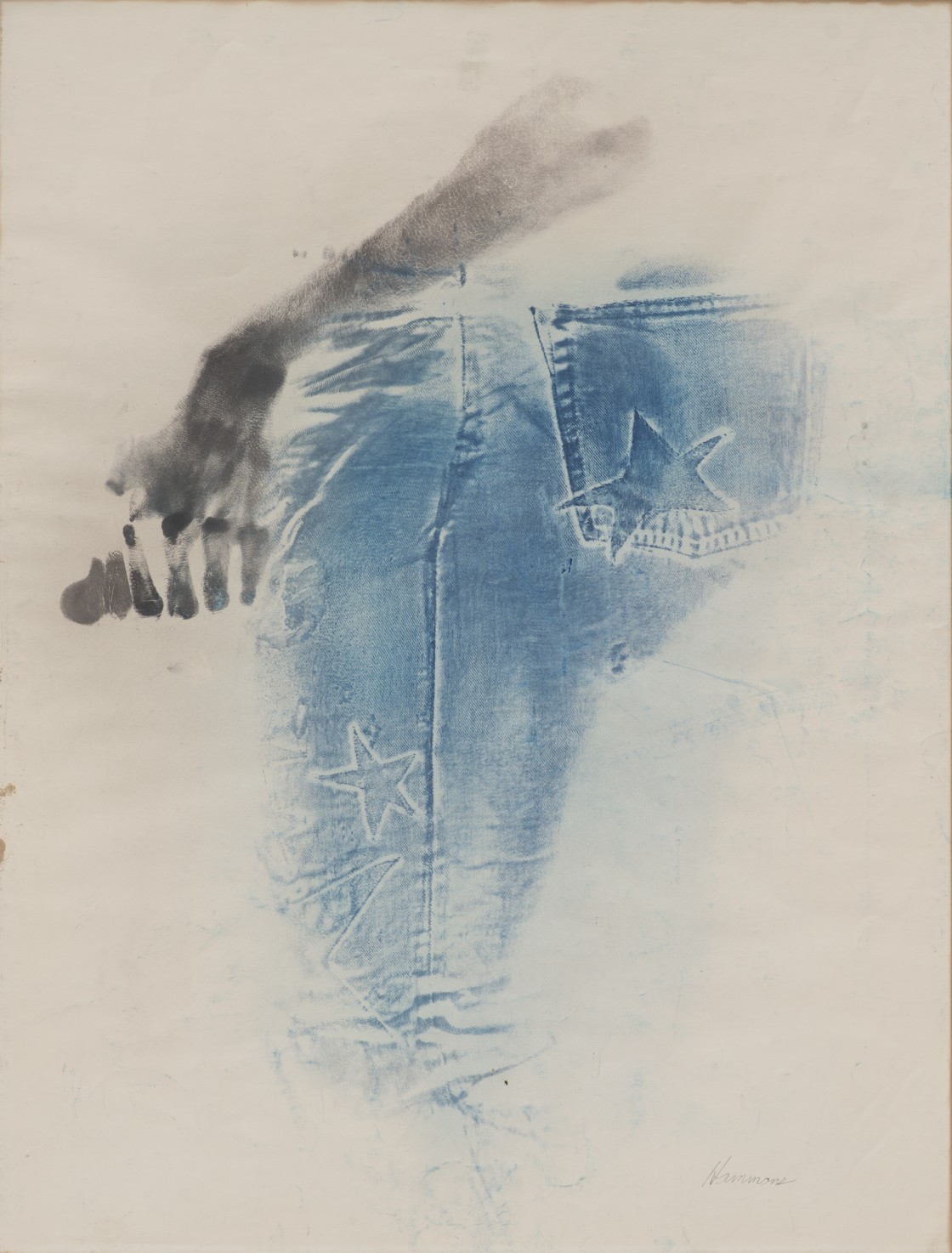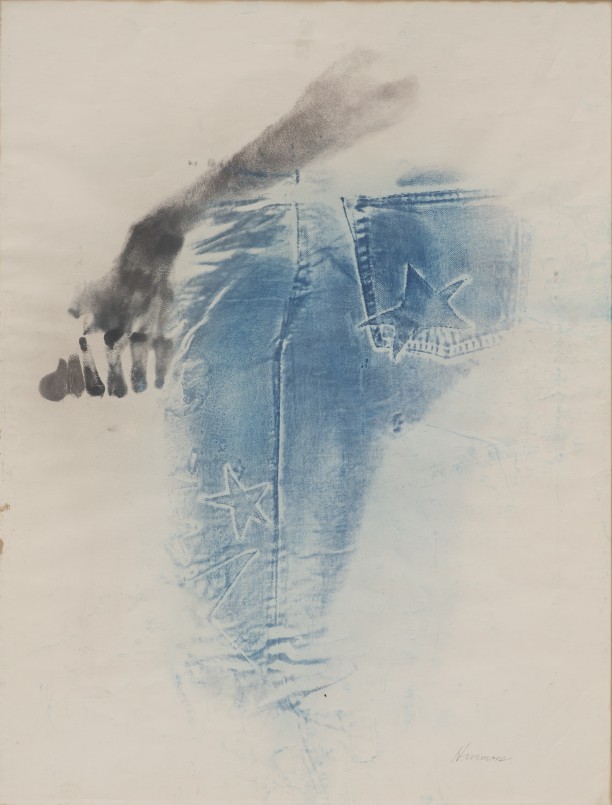Body Print
1974 - 1975

-
Medium
Pigment on paper
-
Dimensions
29 1/8 x 22 in. (73.98 x 55.88 cm)
-
Credit
The Museum of Contemporary Art, Los Angeles
Purchase with funds provided by the Drawings Committee, Jeffrey Deitch, Jane Siegal, Jeffrey Pechter, Bob Tuttle, Ron Handler and a gift of Giovanna Zamboni-Paulis -
Accession number
2012.29
-
Object label
David Hammons executed his “body prints” by smearing margarine or other grease on his skin, clothes, and hair, pressing himself against a large sheet of paper, and then dusting the oily imprint with ground pigment. Here, blue pigment suggests denim pants, while dark brown represents the skin tone of Hammons’s forearm, hand, and penis. Though the artist’s body serves as the printing plate, Body Print is not a self-portrait. Rather, it explores two competing conceptions of identity. In the first, identity is specific to each individual, while in the second, it is imposed from without by social forces, such as stereotyping. Interestingly, the term “stereotype” originally meant a method of printing from a plate. Hammons shows us that in the stereotyping process of fixing an image, identity is flattened out and stripped of dimension.
